Horsley Park, East Horsley, Surrey.
27-29 June.

with Dr Terence Palmer PhD
Venue: University of Warwick
The Mystics and Scientists conferences have been held every year since 1978, and are dedicated to forging a creative understanding of the complementary roles of scientific and mystical approaches to reality. The conferences always provide a highly engaging and creative opportunity to come together with like-minded people in a spirit of exploration and dialogue. This year we are looking at various aspects of our conscious experience of time, drawing on physics, neuroscience, philosophy, phenomenology, psychology and parapsychology. Bernard Carr, Natalie Depraz and Barbara Magnani have different approaches to the relationship between physical and psychological time, while Jacob Needleman considers the spiritual mystery of time in relation to the practical problem of time. David Luke asks if we can in some sense transcend time in precognition. James d’Angelo and David Lorimer offer an experience of music, rhythm, movement and dance. We greatly look forward to your participation.
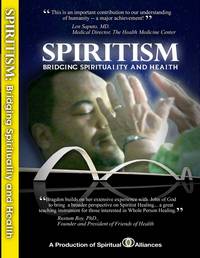 Abstract
AbstractSpiritism is the third most common religion in Brazil, and its therapies have been used by millions worldwide. These therapies are based on therapeutic resources including prayer, laying on of hands, fluidotherapy (magnetized water), charity/volunteering, spirit education/moral values, and disobsession (spirit release therapy). This paper presents a systematic review of the current literature on the relationship among health outcomes and 6 predictors: prayer, laying on of hands, magnetized/fluidic water, charity/volunteering, spirit education (virtuous life and positive affect), and spirit release therapy. All articles were analyzed according to inclusion/exclusion criteria, Newcastle-Ottawa and Jadad score. At present, there is moderate to strong evidence that volunteering and positive affect are linked to better health outcomes. Furthermore, laying on of hands, virtuous life, and praying for oneself also seem to be associated to positive findings. Nevertheless, there is a lack of studies on magnetized water and spirit release therapy. In summary, science is indirectly demonstrating that some of these therapies can be associated to better health outcomes and that other therapies have been overlooked or poorly investigated. Further studies in this field could contribute to the disciplines of Complementary and Alternative Medicine by investigating the relationship between body, mind, and soul/spirit.
Click on the image for the online paper.
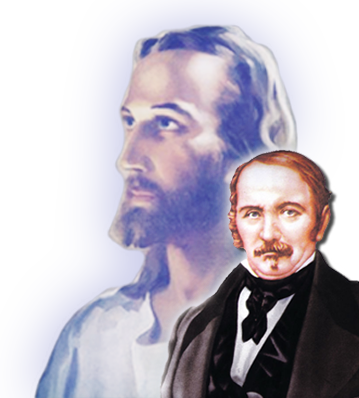 Abstract
AbstractIn Brazil, during the XX century, dozens of Spiritist psychiatric hospitals emerged seeking to integrate conventional medical treatment with complementary spiritual therapy. This combined inpatient treatment is largely found in Brazil, where many psychiatric hospitals stem from the Spiritist movement. The present report describes the use of these spiritual practices, their operating structure, health professionals involved, modalities of care, and institutional difficulties in integrating spiritual practices with conventional treatment in six leading Brazilian Spiritist psychiatric hospitals. These hospitals combine conventional psychiatric treatment with voluntary-based spiritual approaches such as laying on of hands (“fluidotherapy”), lectures regarding spiritual and ethical issues, intercessory prayer, spirit release therapy (“disobsession”) and “fraternal dialogue”. The non-indoctrination and optional nature of these spiritual complementary therapies seem to increase acceptance among patients and their family members. In conclusion, the Spiritist psychiatric hospitals in Brazil have, for more than half a century, provided an integrative approach in the treatment of psychiatric disorders, associating conventional and spiritual treatments, more specifically Spiritist therapy. The lack of standardized treatment protocols and scientific studies remain a barrier to assessing the impact of this integrative approach on patients’ mental health, quality of life, adherence, and perceived quality of treatment.
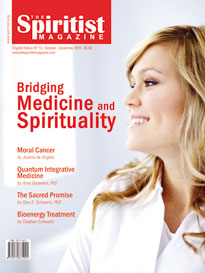 BACKGROUND:
BACKGROUND:Spiritual issues are rarely addressed by psychiatric institutions in daily routine practice.AIMS:
To report the prevalence of, and factors associated with, inpatients’ acceptance of religious assistance in a psychiatric hospital.
METHODS:
All patients evaluated by the religious assistance service in a psychiatric hospital were included. Patients admitted were asked about their need for religious assistance and were assessed on several religious aspects. Additional information was collected from patients’ hospital charts. A comparison between those who accepted the religious assistance and those who did not was performed.
RESULTS:
Most of the 213 patients evaluated requested religious assistance (85.0%), including those that reported having no religion (79.1%). Patients with a diagnosis of schizophrenia (p = .010) and lower intrinsic religiousness (p = .002) tended to request less religious assistance. More than 80% of patients requested assistance based on religious traditions other than their own.
CONCLUSION:
Most psychiatric inpatients were willing to participate in religious assistance sessions, even those without formal religious affiliations. Patients with lower intrinsic religiosity and schizophrenia tended to request less assistance. We believe the findings of this study can serve to foster discussion on whether psychiatric hospitals should provide a structured religious care service.
KEYWORDS:
Spirituality, psychiatry, religion and medicine, religious assistance

While there has been a large increase in scientific studies on spirituality, there has been too few of studies of the core of spirituality: spiritual experiences (SE), which often involve altered states of consciousness, reports of anomalous experiences and of consciousness beyond the body. This paper argues that SE, although usually neglected in debates regarding mind-brain relationship (MBR), may provide the much needed enlargement of the empirical basis for advancing the understanding of the MBR.
This paper briefly presents and discusses recent scientific investigations on some types of SE (meditative states, end of life and near death experiences, mediumship and alleged memories of previous lives) and their implications to MBR.
Neurofunctional studies of SE have shown that they are related to but not necessarily caused by complex functional patterns in several brain areas. The study of meditative states, as voluntarily induced mind states that influence brain states has been a privileged venue to investigate top-down (mind over brain) causation. End of life and near death experiences offer cases of unexpected adequate mental function under severe brain damage and/or dysfunction. Scientific investigations of several types of SE have provided evidence against materialistic reductionist views of mind.
The recent trend to scientifically investigate SE has already produced interesting and thought-provoking findings that deserve careful further exploration. Because of their potential implication, these findings may also contribute to the understanding of MBR, which remains an important, yet poorly explored way to investigate human nature.
Copyright © 2013 Elsevier B.V. All rights reserved.
Consciousness, Mind, Mind–brain problem, Mind–brain relationship, Spiritual experiences, Spirituality
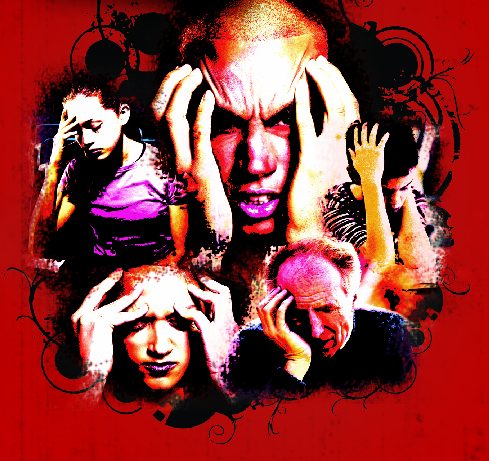 Abstract
AbstractThis article expands psychosocial and cultural perspectives on the experience and expression of psychotic symptoms and the treatment of schizophrenia by exploring how Spiritism, a popular religion in Latin America, provides healing to persons with severe mental illness. Beliefs and treatment by Spiritist healers of persons with psychotic symptoms, some diagnosed with schizophrenia, are described. Reactions by mental health professionals (psychologists, mental health technicians and psychiatrists) to this alternative treatment are described. Qualitative data have been collected through in-depth interviews with 49 Spiritist mediums in Puerto Rico, and case histories of 22 patients and their family members, all of whom gave informed consent. In Brazil, interviews were conducted with a sample of 115 Spiritist mediums, with their informed consent. These mediums responded to semi-structured interviews and standard measures of social adjustment and mental health. As expected, beliefs and practices of Spiritist healers regarding psychotic symptoms, whether manifested by themselves or by clients diagnosed with schizophrenia or other disorders, differ substantively from conventional psychiatric constructs and treatment approaches. According to patients’ self reports and researchers’ observations, spirit healers often achieve positive results with persons manifesting psychotic symptoms or diagnosed with schizophrenia in that symptoms become less frequent and/or social adjustment improves. We suggest psychosocial mechanisms to explain these findings and raise questions for future research.
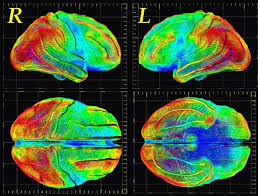 Abstract
AbstractDespite increasing interest in pathological and non-pathological dissociation, few researchers have focused on the spiritual experiences involving dissociative states such as mediumship, in which an individual (the medium) claims to be in communication with, or under the control of, the mind of a deceased person. Our preliminary study investigated psychography – in which allegedly “the spirit writes through the medium’s hand” – for potential associations with specific alterations in cerebral activity. We examined ten healthy psychographers – five less expert mediums and five with substantial experience, ranging from 15 to 47 years of automatic writing and 2 to 18 psychographies per month – using single photon emission computed tomography to scan activity as subjects were writing, in both dissociative trance and non-trance states. The complexity of the original written content they produced was analyzed for each individual and for the sample as a whole. The experienced psychographers showed lower levels of activity in the left culmen, left hippocampus, left inferior occipital gyrus, left anterior cingulate, right superior temporal gyrus and right precentral gyrus during psychography compared to their normal (non-trance) writing. The average complexity scores for psychographed content were higher than those for control writing, for both the whole sample and for experienced mediums. The fact that subjects produced complex content in a trance dissociative state suggests they were not merely relaxed, and relaxation seems an unlikely explanation for the underactivation of brain areas specifically related to the cognitive processing being carried out. This finding deserves further investigation both in terms of replication and explanatory hypotheses.
ABSTRACT
The mind-body relationship has prompted debate from the times of millennial religious traditions and the ancient Greeks through to contemporary neuroscience, and although these questions have yet to be decisively answered, therapeutic interventions today are guided by assumptions made in this respect. Research on the neural correlates of consciousness and mental expressions has made progress over the last 15 years by developing functional brain imaging methods. This approach may open up new perspectives for studies of the expression of presumed instances of spiritual consciousness, which would have major ethical, social and philosophical implications. We pose a promising new line of research in the neurosciences and discuss certain issues pertaining to the effective use of neuroimaging to investigate mediumship and advance the consensus comprehension of consciousness, alleged spiritual communication and its relations with the brain. We highlight methodological challenges and lessons gleaned from our neurofunctional study of mediumship to be considered for further research in this field when formulating hypotheses to address these phenomena, and discuss useful guidelines for neuroimaging studies of spiritual experiences in general.
Keywords: Mediumship, consciousness, dissociation, neuroimaging, SPECT.

Biofield therapies are approaches that harness energy fields to influence the human body. These therapies encompass Reiki, Qigong, Therapeutic Touch, Johrei and Spiritist “passe”, among others. The aim of this study was to evaluate bacterial growth in two groups of cultures subjected to biofield therapy (Spiritist “passe” and laying on of hands (LOH)) in four situations (no intention, intention to inhibit bacterial growth, intention to promote growth, and influence of a negative factor) and compare them with a “no LOH/no treatment” group.
Bacterial cultures (Escherichia coli ATCC) were randomized and allocated into three groups: Spiritist “passe”, “LOH”, and “no LOH”. Bacterial growth was assessed using the McFarland Nephelometer Scale. A One-way ANOVA was performed to determine group differences in bacterial growth at 48h, and at 1 week after each situation.
A total of 11 Spiritist “passe” healers, 10 LOH laymen and “no LOH” tubes were assessed. Under the intention to inhibit bacterial growth condition, statistically significant differences were found between the Spiritist “passe” and “no LOH” Groups (p=0.002 after 48h, and p=0.008 after one week) and also between the Spiritist “passe” and “LOH” Groups (p=0.005 after 48h, and p=0.009 after one week). No statistically significant difference was detected for the other situations tested (no intention, intention to promote growth and influence of a negative factor).
We concluded that Spiritist “passe” effectively inhibited growth in bacterial cultures compared to LOH with intention or no LOH. Further studies comparing different intentions and types of LOH in cultures of cells and microorganisms are warranted.
Copyright © 2013 Elsevier Ltd. All rights reserved.
Bacteria, Biofield therapies, Passe, Spiritism, Therapeutic touch